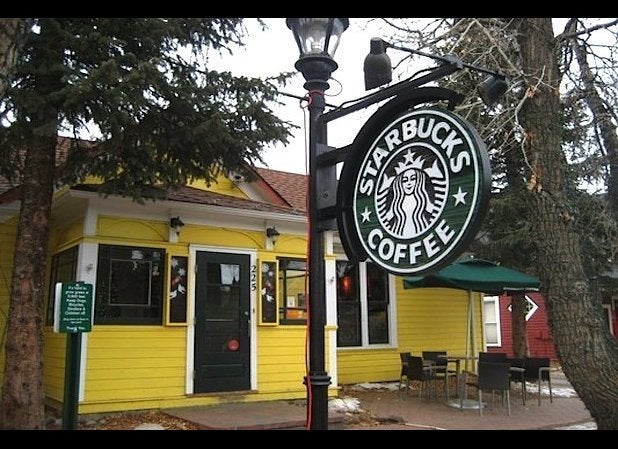
As Starbucks eyes expansion in international markets with increasingly keen interest -- it plans to accelerate growth abroad in 2013 -- the chain is beginning to adjust its business model to tackle issues unique to various cultures.
Ad Age asks the pointed question "Can Starbucks Make China Love Joe?" in a recent piece, which launches into a number of concerns specific to Starbucks stores in China.
Unlike in the U.S., Starbucks locations in China are the antithesis of grab-and-go. Most patrons visit in pairs or groups and the atmosphere inside the store is designed to let them linger for hours, with large community tables and "living room-style configurations" of couches and chairs. Morning business is another differentiating point; most business in China is conducted after 2 p.m. And a quote from the government minder, Fu Xiaobin, who was tailing the Ad Age reporter speaks volumes for Starbucks' gender-based appeal:
"I think coffee is more of a woman's drink, don't you?" Mr. Fu asked. "If you were doing business with a woman then maybe you could bring her to a coffeehouse. But if you were doing business with a man ... you go to a restaurant and talk business over a meal or you go to karaoke and make deals while you sing together. The idea of men talking business in a place like Starbucks ... I think that's just ridiculous."
Other cultural tweaks to the Starbucks model can be seen in a design by architect Kengo Kuma for a new location in Dazaifu, a small city in Japan's Fukouoka Prefecture. The model does away with the chain's iconic decor in favor of an intricate design of interwoven wooden planks, meant to fit in alongside the city's other traditional Japanese buildings.
In a release from Kuma's firm, the design "aimed to make a structure that harmonizes with such townscape, using a unique system of weaving thin woods."
Starbucks has been adapting to meet cultural preferences in Europe, as well. Earlier this year, the New York Times reported that Starbucks had launched a multimillion-dollar campaign in an effort to woo French customers who favor the country's cafe culture. The company hopes that by adding seating areas and other renovations it will finally be able to turn a profit in France -- something that's been elusive in the eight years since it arrived in the country.
Last month, a press release touting Starbucks' debut in India also hit upon ways it will appeal to locals. Stores will feature "Indian teakwood furniture, floor design and interiors created by local craftsmen and artists," as well as offer "locally relevant flavors" in food offerings like the Elaichi Mawa Croissant, Murg Tikka Panini and Tandoori Paneer Roll.
Starbucks' willingness to diverge from its signature look and offerings reflects a broader trend of global businesses seeking to more effectively tap into local communities. Fast food chains like McDonald's, KFC and Burger King all offer country-specific offerings to better suit local tastes, although many such chains retain decor and design similar to U.S. locations.
In that sense, Starbucks may have hit on something. Restaurants have long known that the atmosphere in which we eat and drink is often just as important as what we eat and drink, and now business dollars will determine if such is true for global chains.
